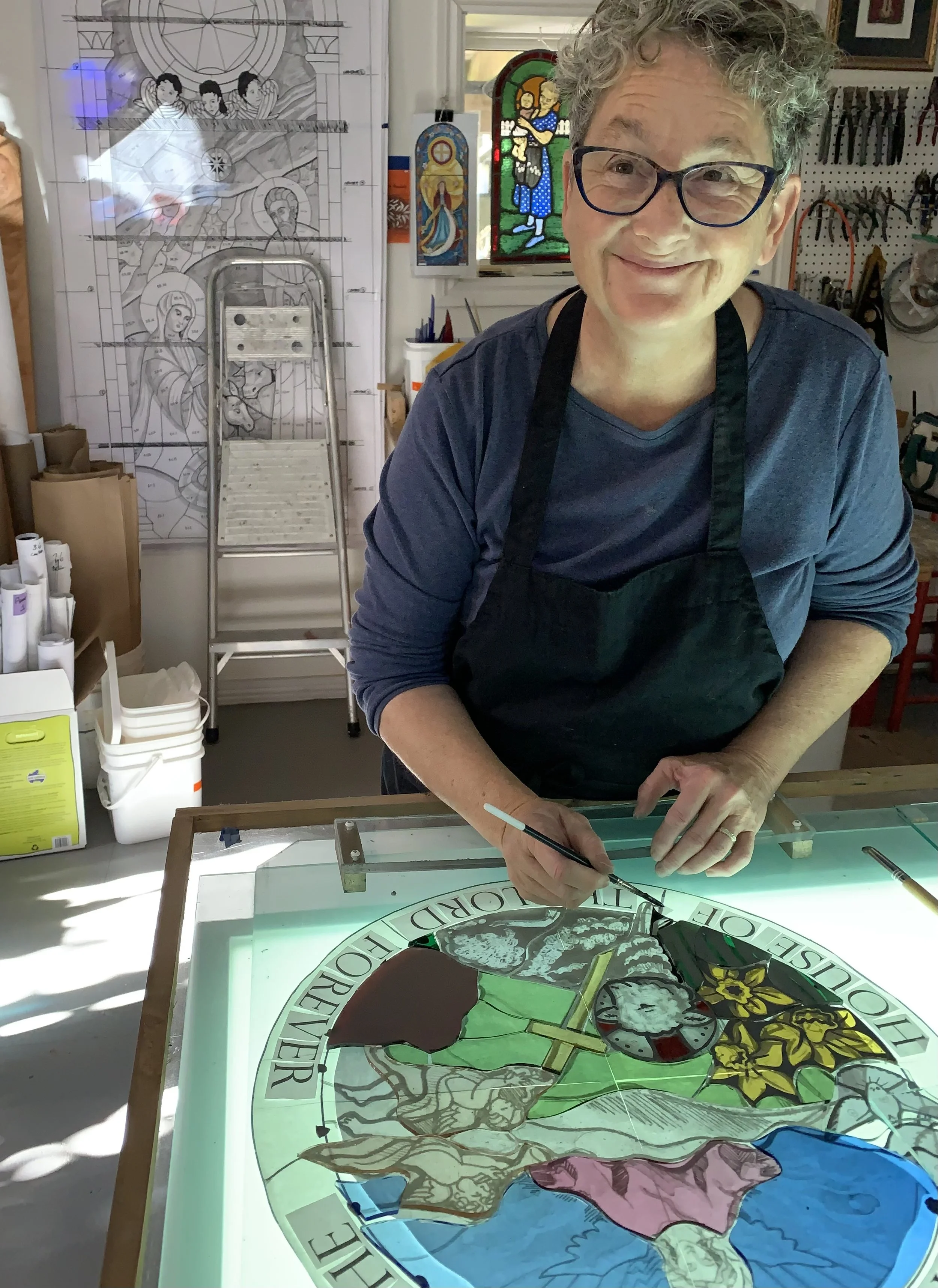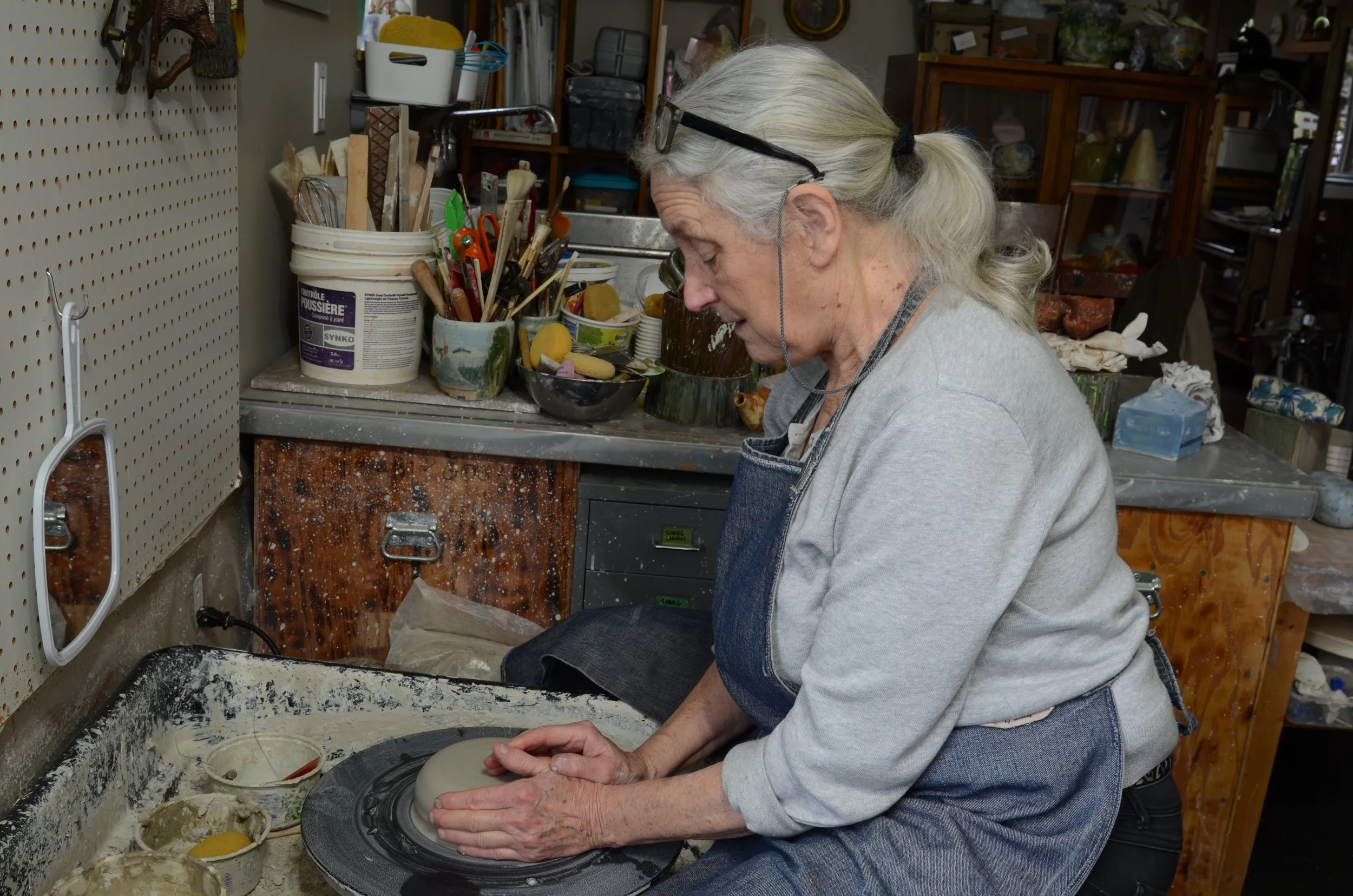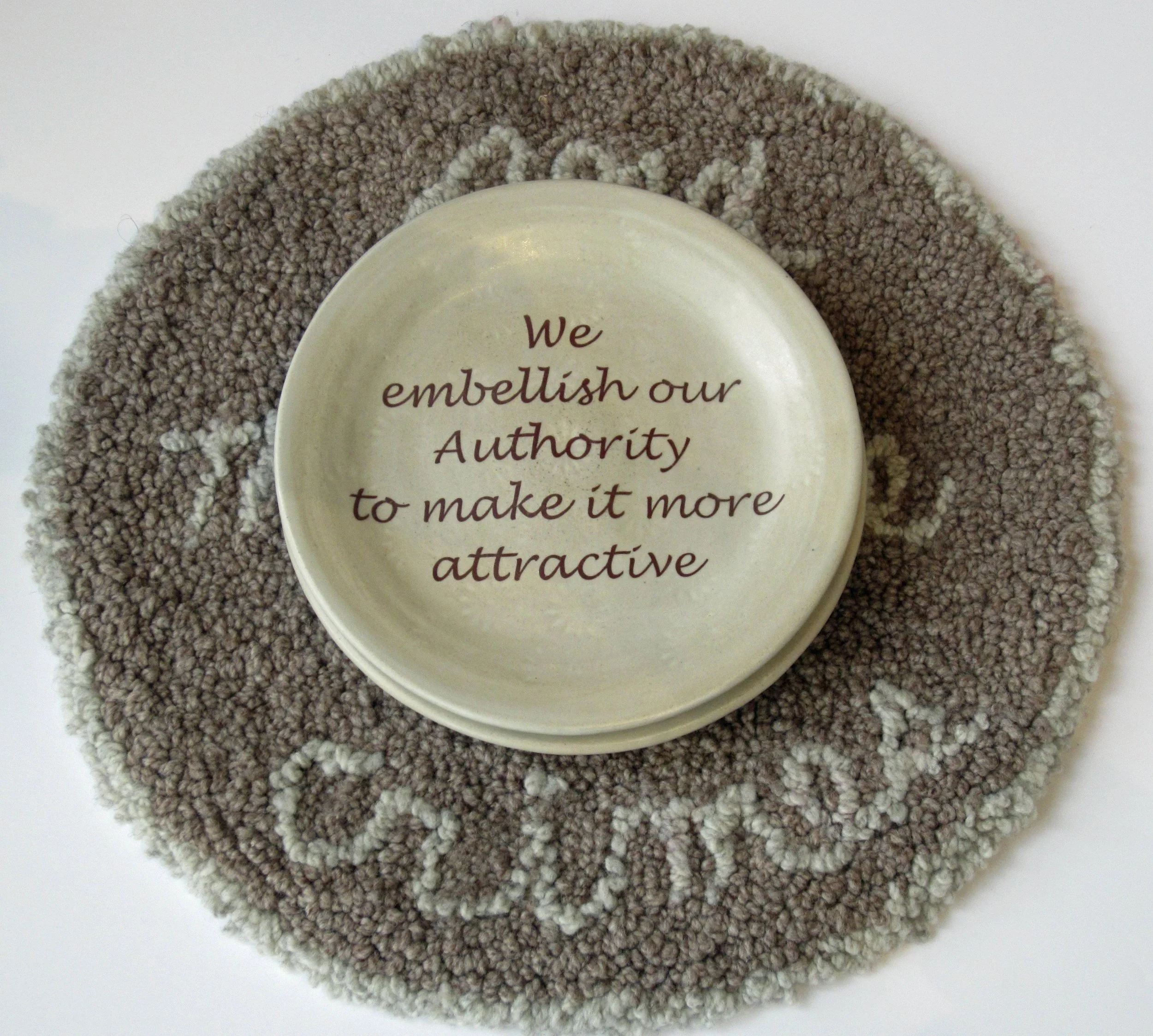Making Over Time: Aging and craft practices
Nancy E. Oakley working with a clay mold, 2021. Photographer: Cory Katz
Nancy Oakley has been immersed in the world of handmade for as long as she can remember. A Miˈkmaq and Wampanoag clay artist based in Eskasoni, N.S., Oakley began her artistic career as a photographer. Turned off by the increasing reliance on digital in the photography industry, she turned to clay and beading, and she’s been at it for 28 years so far.
Oakley started selling photographic cards in 1989, as well as photographs to magazines. In 1993 she changed artistic mediums and began making and selling black ash baskets and beadwork. About three years later she added pottery to the mix. Today, Oakley displays and sells her work at a variety of locations in Canada and the United States, including Nova Scotia, New Brunswick and Massachusetts.
Oakley grew up in a close-knit family of artisans, and this set her on the path to become one herself.
My mom was a seamstress. I would watch her crochet and make our dresses. We were traditional dancers, and my dad would hunt deer and make traditional headdresses out of it. I would sit with my mom while she beaded onto our traditional outfits,” she remembers. “I also worked with my aunt and uncle, helping make baskets in their basket shop from when I was six. And my grandmother used to make baskets as well. It’s been in my life forever.
Nancy E. Oakley, Sacrifice, 2018. Mica clay and sweetgrass, 10.75 x 9 x 10.75 cm. COURTESY OF THE ARTIST.
This strong lineage of craft informs Oakley’s work, and that, combined with Miˈkmaq practices, leads her to create pieces that are rich in tradition.
…
Lynette Richards in her studio.
For many elder craftspeople, there’s also the fear that certain elements of their trade might disappear with them. Lynette Richards, based in Terency Bay, N.S., is an artist who has worked with architectural stained glass for over 30 years, and she worries about this.
There is a very small community of people who know how to do what I do,” she explains. “And not only is it difficult to get the training in Canada, or even in the United States, it takes a long time to learn how to use the paint and to learn how to actually design and paint for architecture.
…
ANIMAL VEGETABLE MINERAL exhibition installation. Photo: Brian Medina, COURTESY OF HARBOURFRONT CENTRE.
Melanie Egan, the director of craft and design at Toronto’s Harbourfront Centre, has been in the industry for 33 years. She highlights the importance of a mentorship working both ways. Egan often encourages artists who have been in the industry for a long time to reach out to younger ones to learn about new technologies or methods. “It’s important that the conversation works both ways,” she says.
Egan also explains the importance for all artists, including elders, to have a community where ideas and information can be exchanged, and where issues like physical and mental health can be discussed candidly. In a society that often doesn’t see art as a legitimate way to contribute to the world, mentorship serves as an intergenerational catalyst to keep art, tradition and history alive.
…
But the financial needs of artists may soon have more visibility. The proposed Bill S-208 — An Act respecting the Declaration on the Essential Role of Artists and Creative Expression in Canada — put forward by Senator Patricia Bovey, acknowledges the integral role artists play in our society. At the time of writing it has passed the Senate and has had its first reading in the House of Commons. Perhaps this bill will serve as a springboard to make governmental departments recognize the needs, roles and rights of artists, and maybe something like this could lead to future support for aging artists.
Amy Gogarty in her studio. 2023. Photo: Ray Gogarty.
Amy Gogarty, a 70-year-old painter, writer and clay artist based in Vancouver, B.C., says that while a bill might give more visibility to the struggles of elder artists, it’s action that the entire aging community needs to see.
If you’re older and you don’t have much money and you can’t get help with whatever health issue you’re suffering from, your life is so diminished,” she says. “In general, older people are not supported.
The thought of stopping to work is awful, but Gogarty recognizes there might be a time when she has to move out of her home (where her studio is), into an apartment or assisted living facility — a space where there would be no studio — and she wonders where she’ll be able to continue to make art. She goes on to say how community spaces would greatly benefit a whole group of artists — both young and older — who don’t have access to a studio. Spaces where they could both make and exhibit work.
Mireille Perron and Amy Gogarty, And These Are Crimes (detail: Authority), 2023, four cone six electric-fired plates (piled) with laser decal texts, hand-hooked wool rug; plates 18cm dia, rug 33 cm dia. Photo Mireille Perron.
This article is an excerpt.
Read the article in full in the Spring/Summer 2023 issue of Studio Magazine.
Special thanks to FLOURISH for their financial support in making this article possible. FLOURISH is a research cluster based at the University of Toronto Scarborough, and works as an art-led initiative that explores how creative art engagement enriches social engagement and wellness across the lifecourse.
flourishcollective.ca/












